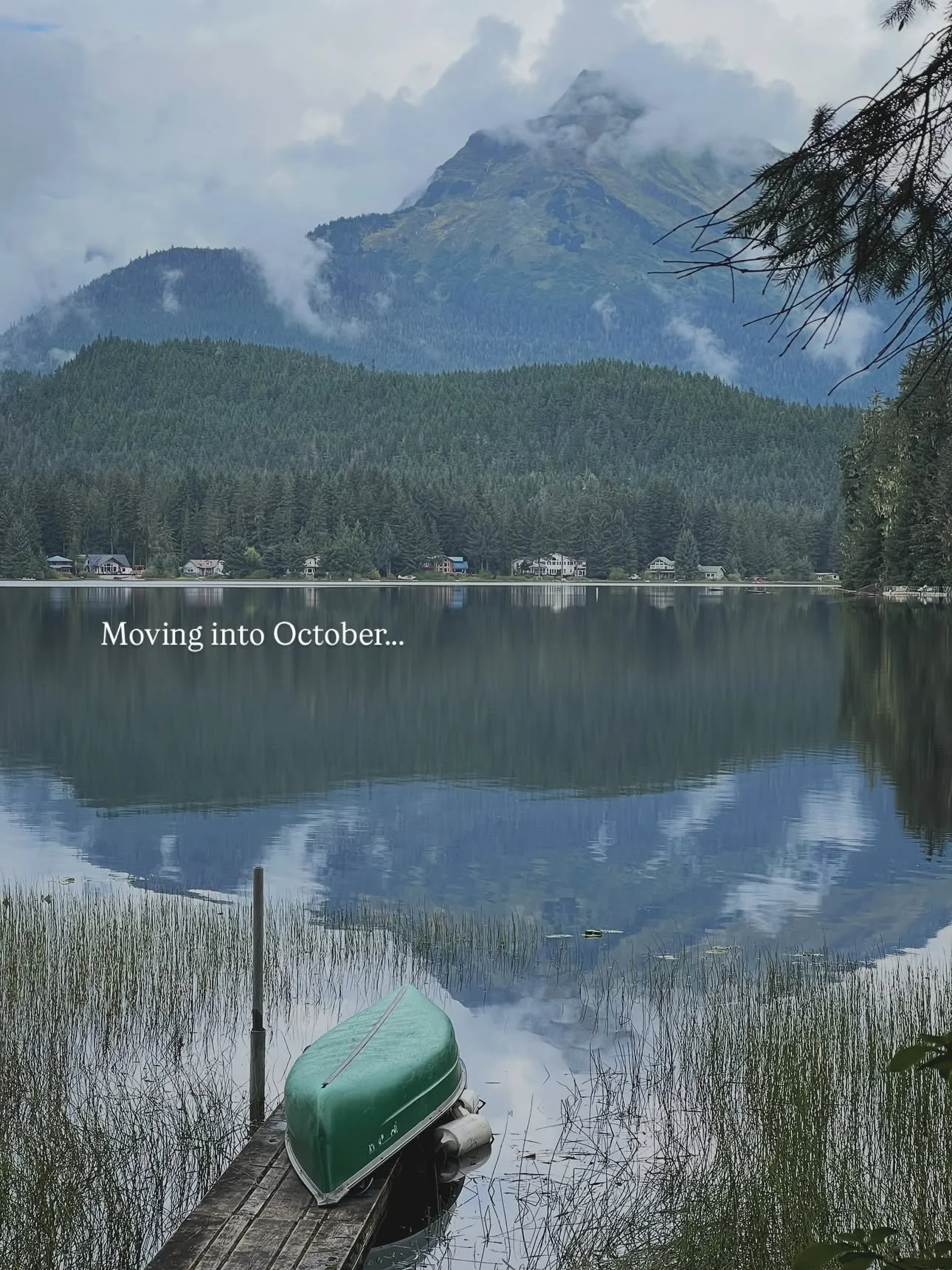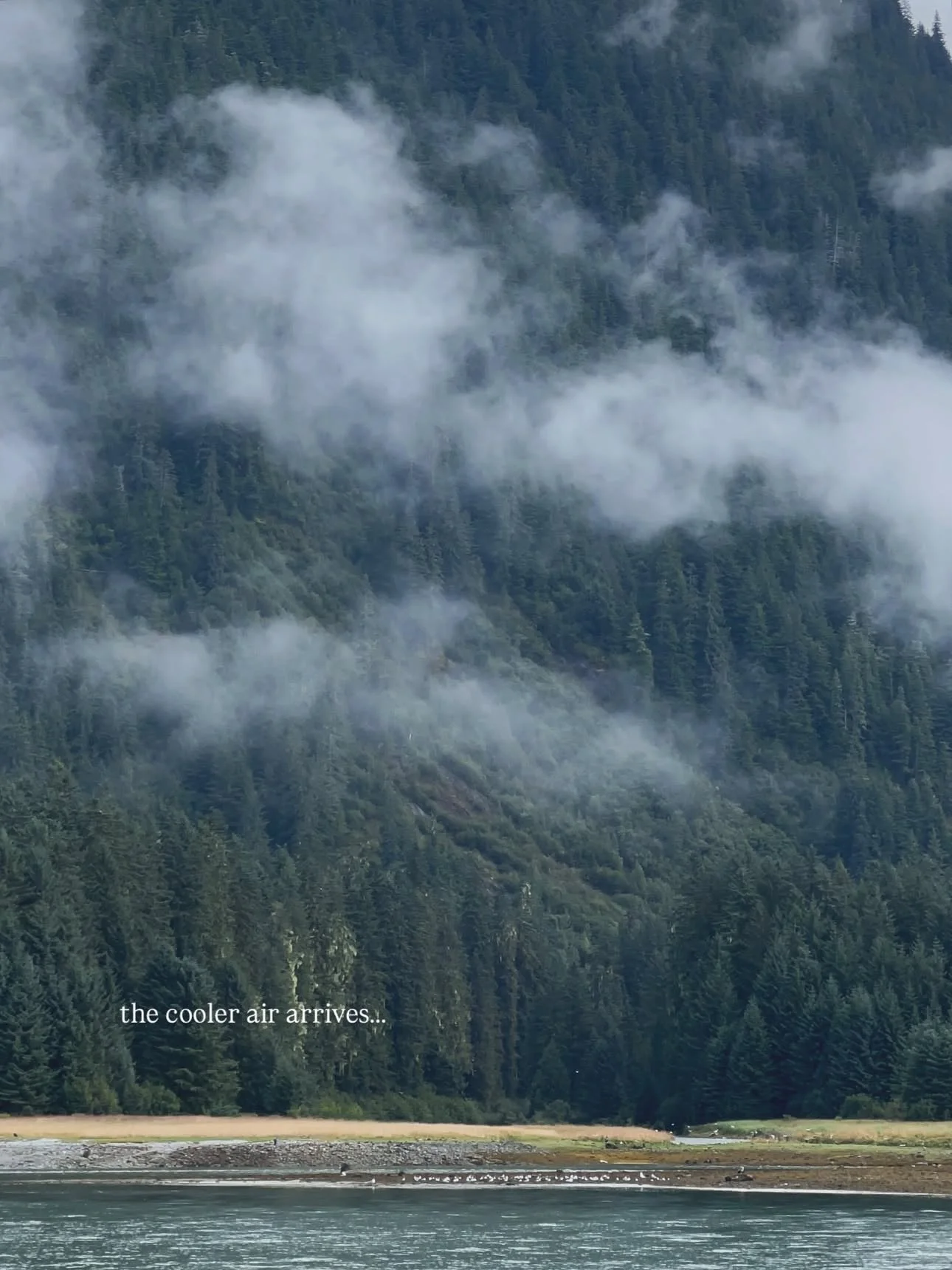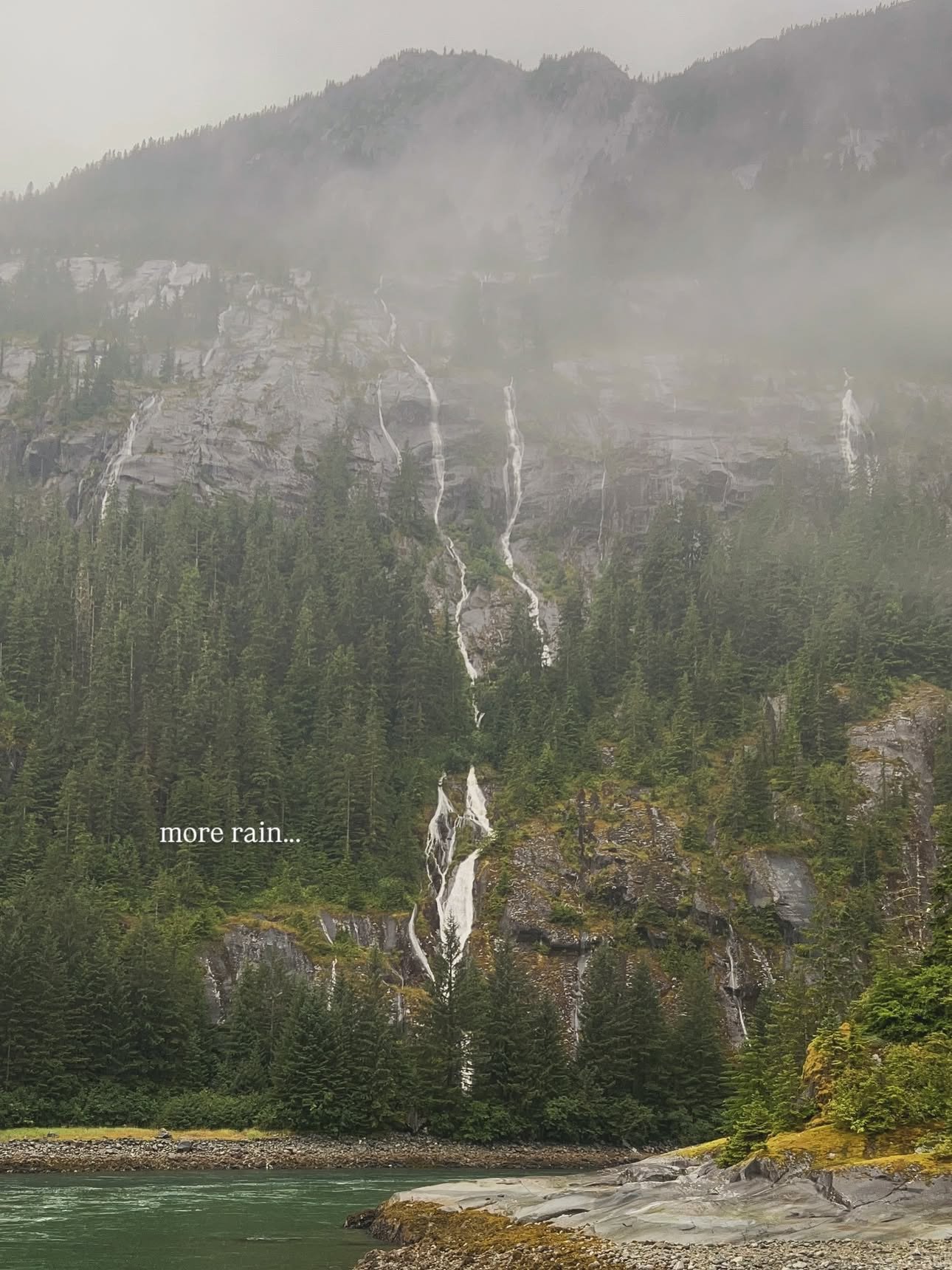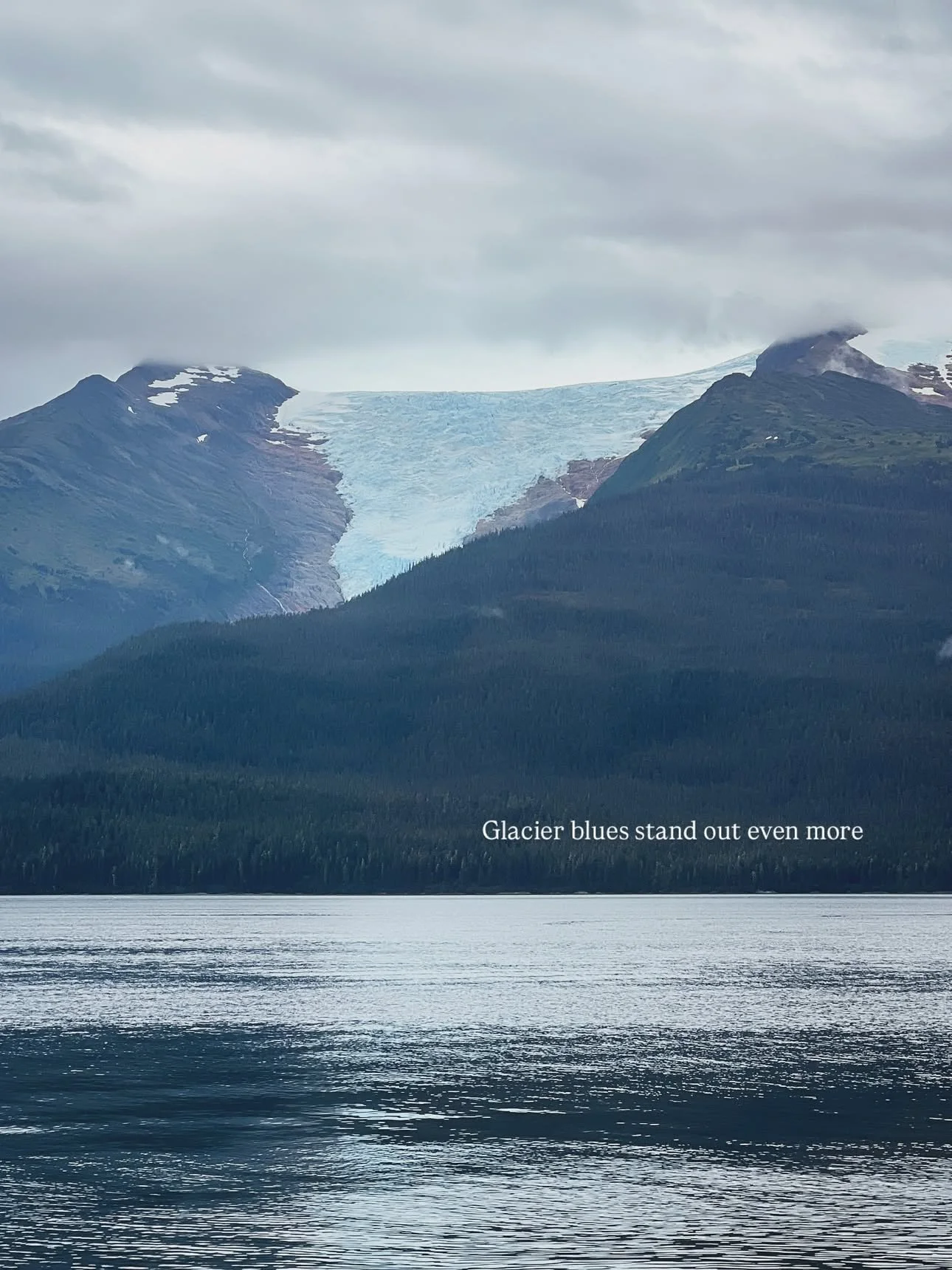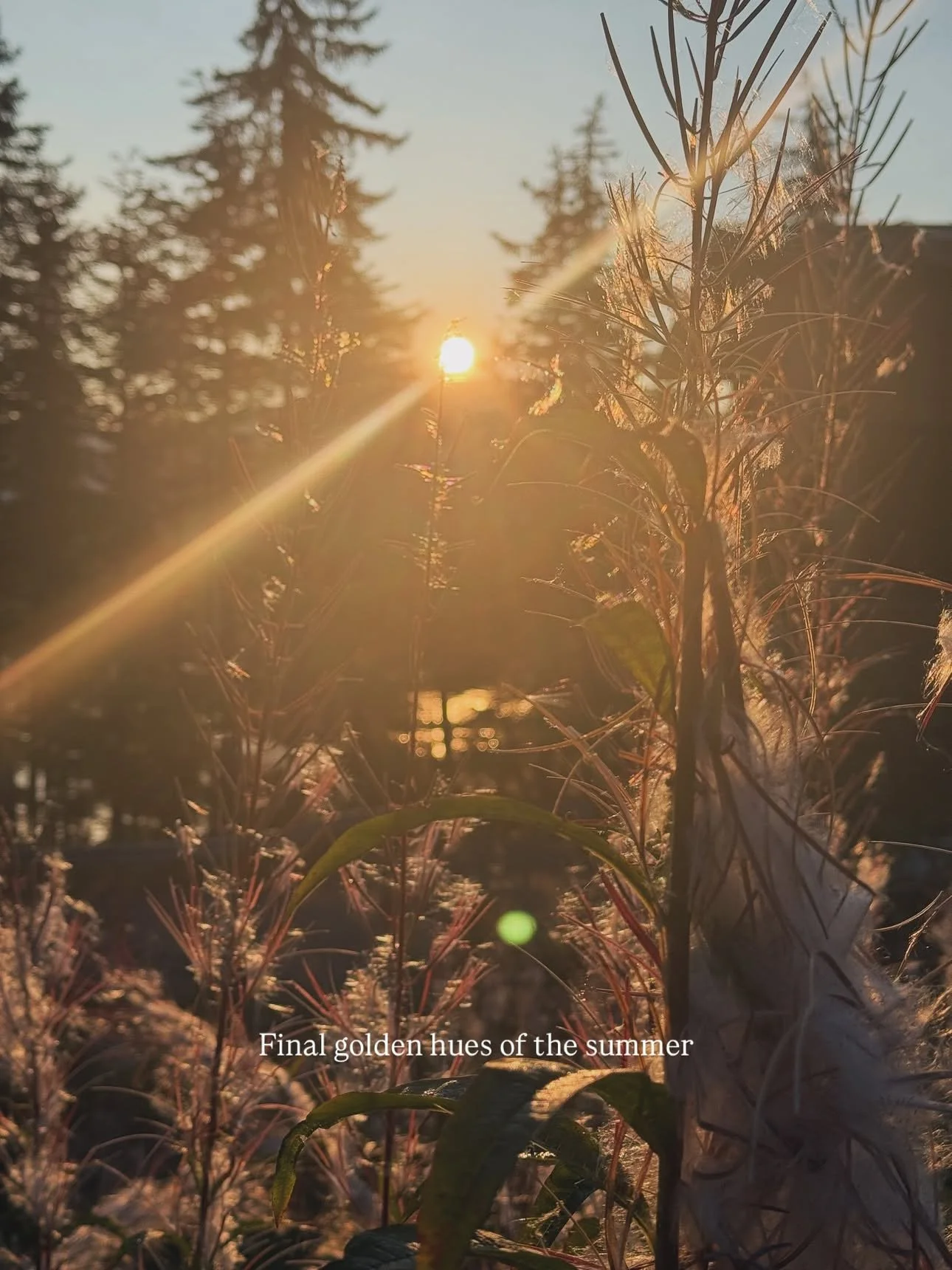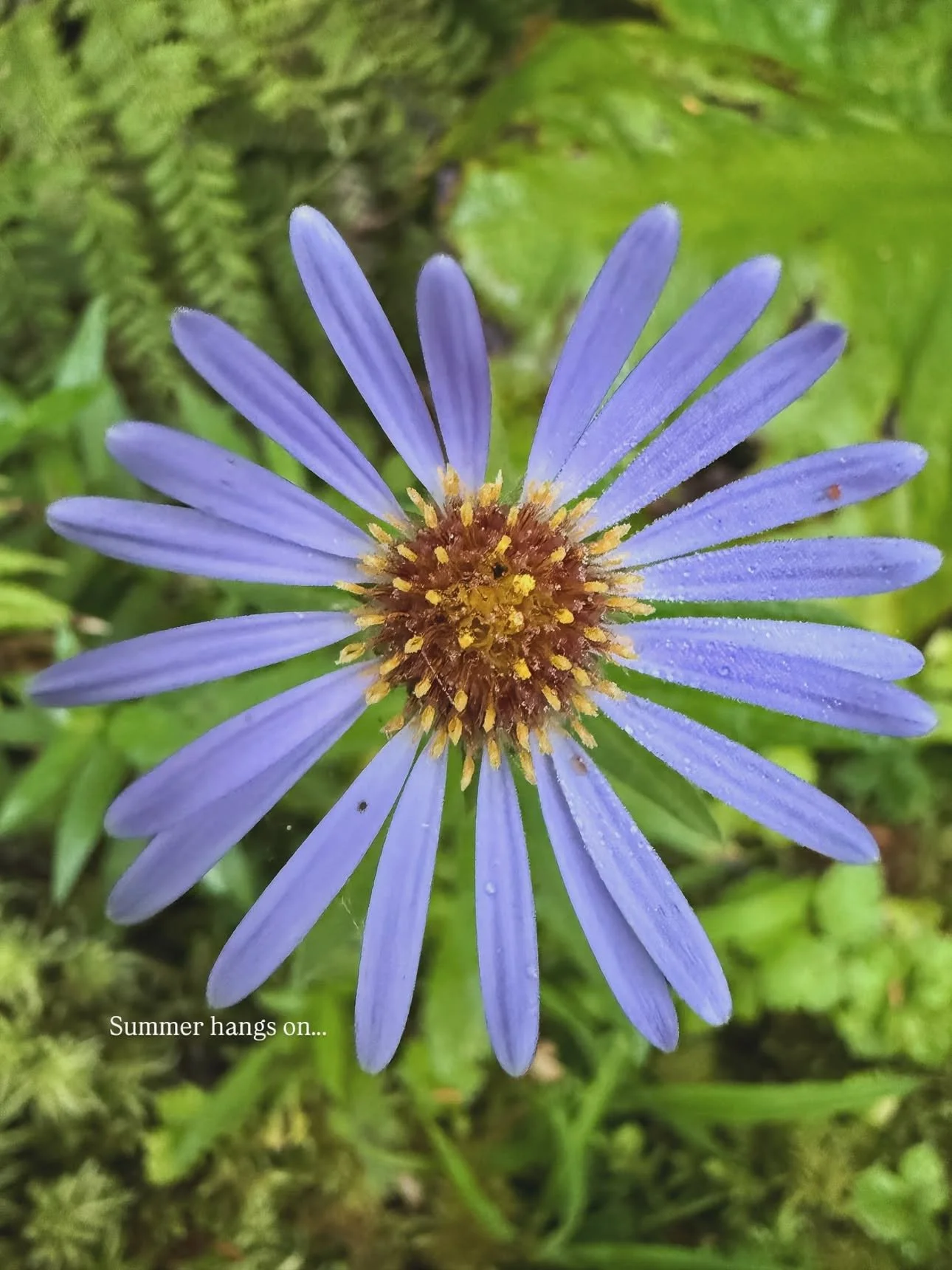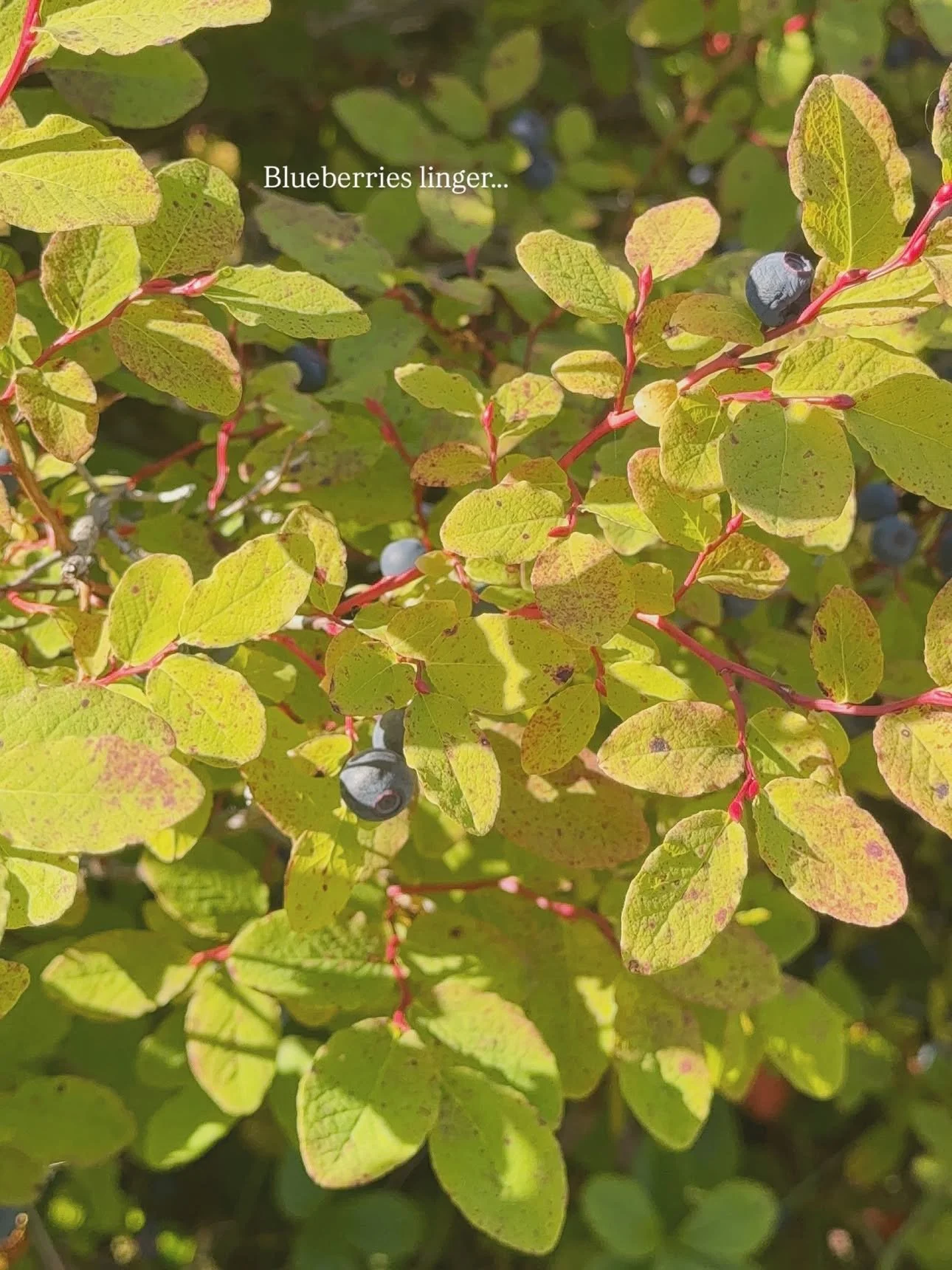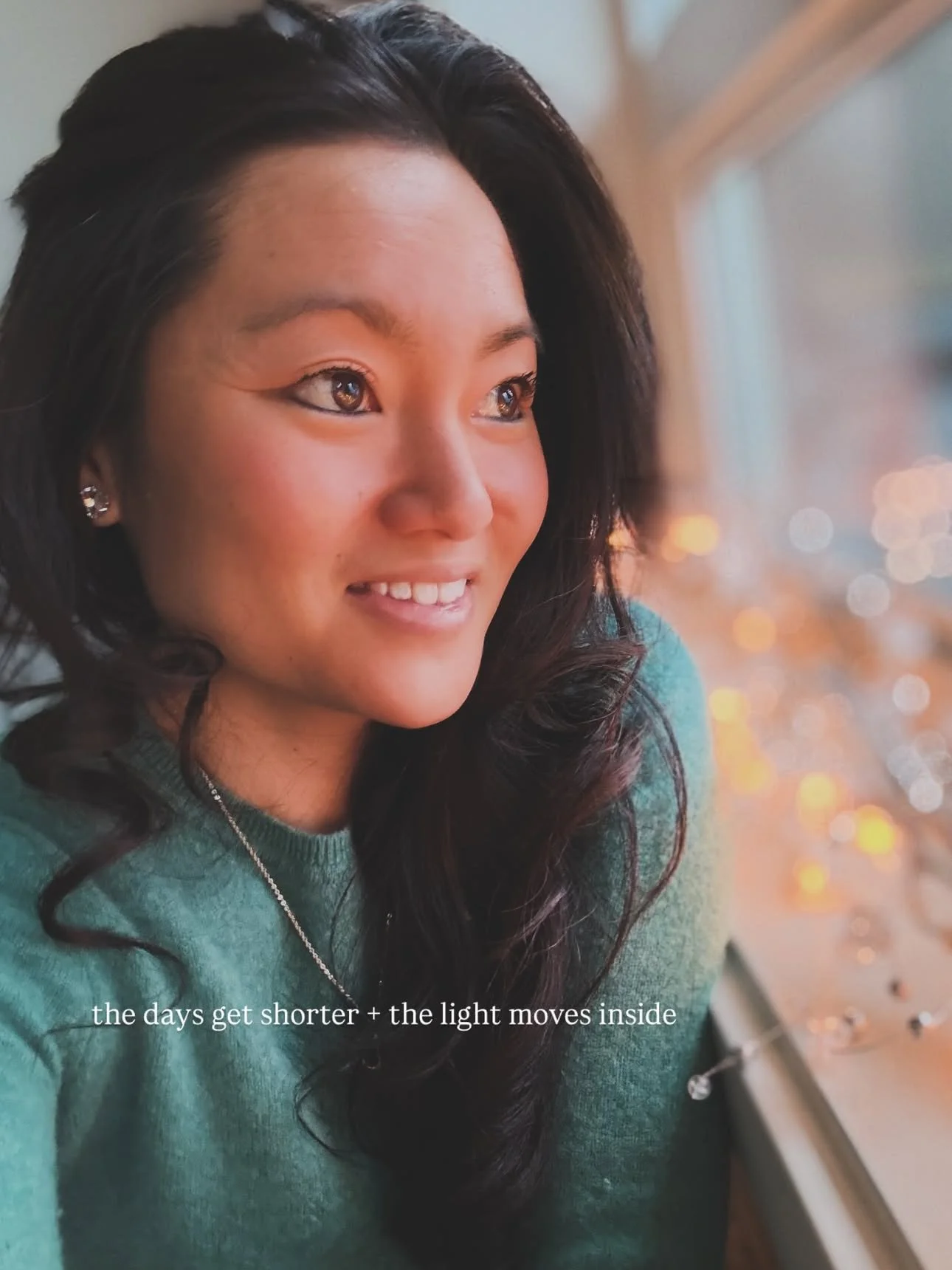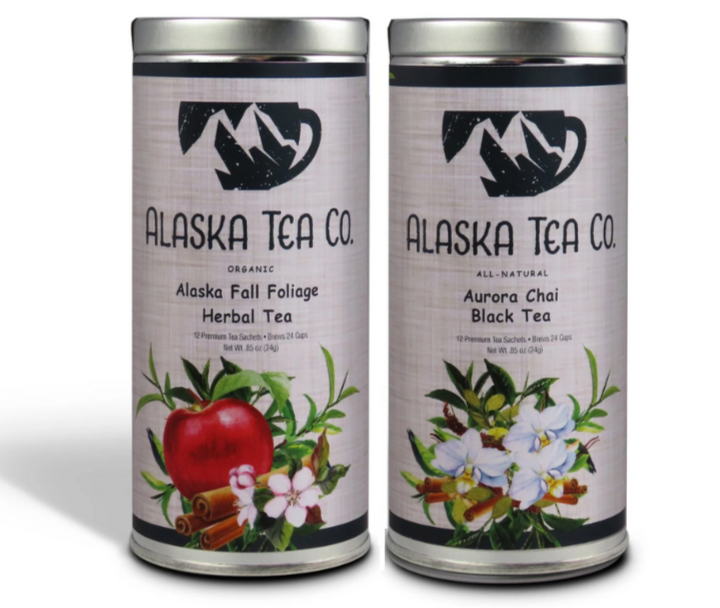Fall doesn’t snap into place here; it leans. Mornings cool down. Window light softens. Lakes go quiet. Fog threads the trees and waterfalls wake up. Across the bay, glacier blue stands brighter against darkening hills. Outside, fireweed tips to gold, blueberries peak, asters hang on. Inside, it’s a warm mug and an easier pace. Here’s how I read the season turning—and a simple field guide if you want to slow with it.
Still Water, Slower Breath
On calm mornings, the lake goes mirror-flat. Sound carries differently across that kind of quiet. I set the camera low to the dock and wait for the minute before wind. If you’re here in September, arrive early; stillness is a sunrise habit.
Colder Air, Fog in the Trees
The first real cue of fall is the air itself. Colder on the inhale, slightly sharper on the exhale. Fog rides low, wrapping the spruce like gauze. Let the whites stay soft in-camera; fall isn’t about edge so much as veil.
More Rain, Waking Waterfalls
Late-season rain lifts the small seams of water back into the granite. Dozens of thin falls braid into the inlet. When the clouds break, everything gleams: black rock, bright moss, pale mist. It’s the kind of scene you can hear before you see.
Glacier Blue Against Dark Hills
As the slopes turn deeper green and gray, ice reads bluer. On clear afternoons you can feel the temperature difference just standing at the shoreline. If you visit, bring a wind layer and give yourself time to simply watch the light move.
Last Light on Fireweed
By September, fireweed trades summer magenta for gold. Backlight it and let the flare in. This is the shoulder between seasons—a soft torch before the stems turn to fluff.
Peak Blueberries, Asters Holding On
Blueberries hit their richest color right as nights dip. Kneel close and the whole understory becomes a palette—glossy fruit, dusty bloom, deep green leaves. Meanwhile the asters do their best to convince us summer hasn’t left yet.
Inside Light, Slower Pace
Indoors, I turn toward the window and let the soft edge of the season become the portrait. Small bouquets, warm mugs, quieter hours. Fall in Southeast Alaska isn’t only outside; it’s the way we move through the room.
Photo: Portrait by window light
Alt text: Soft portrait of a woman in window light with warm background bokeh
A 10-Minute Field Guide to September
Take this outside. Keep it simple.
Step outside with no podcast.
Notice: cooler air, softer light, louder water.
Look for: fog threading trees, last fireweed, bright glacier blues.
Do: five slow breaths; name three sensations (air, sound, light).
Keep: one small ritual (tea, short walk, window light).
Leave No Trace.
When to Visit for These Cues
September is a shoulder month: fewer crowds, more weather. Expect calm mornings, active waterfalls after rain, and variable light—sometimes all in one day. Pack for layers and plan your photo windows early or late.
If you’re local: watch your own street for change. Which tree goes first? What sound tells you the season has turned?
Gear Notes
Wide to normal focal length for the glacier and inlet scenes; macro or close-focus for berries and asters.
For fog, expose for mid-tones and protect highlights; let it stay soft.
Stabilize for the still lake; shoot low, wait for the breath before wind.
FAQ
Is September a good month to visit Juneau, Alaska?
Yes—expect shoulder-season quiet, occasional rain, and beautiful fog. Dress in layers and plan flexible days.
Where can I see glacier blues from town?
Coastlines and overlooks near major bays often offer distant glacier views on clear days. Locally in Juneau, we have Mendenhall Glacier.
What’s the best time of day for still-water reflections?
Early morning before wind typically gives the calmest surface.
Autumn flavor of alaska
Taste the peaceful Autumn season with Alaska Tea Company’s autumn bundle. Shop now until end of October (10/31/2025) for a 15% discount with coupon code: 22CQ9AR. Bundles available first come, first serve.

